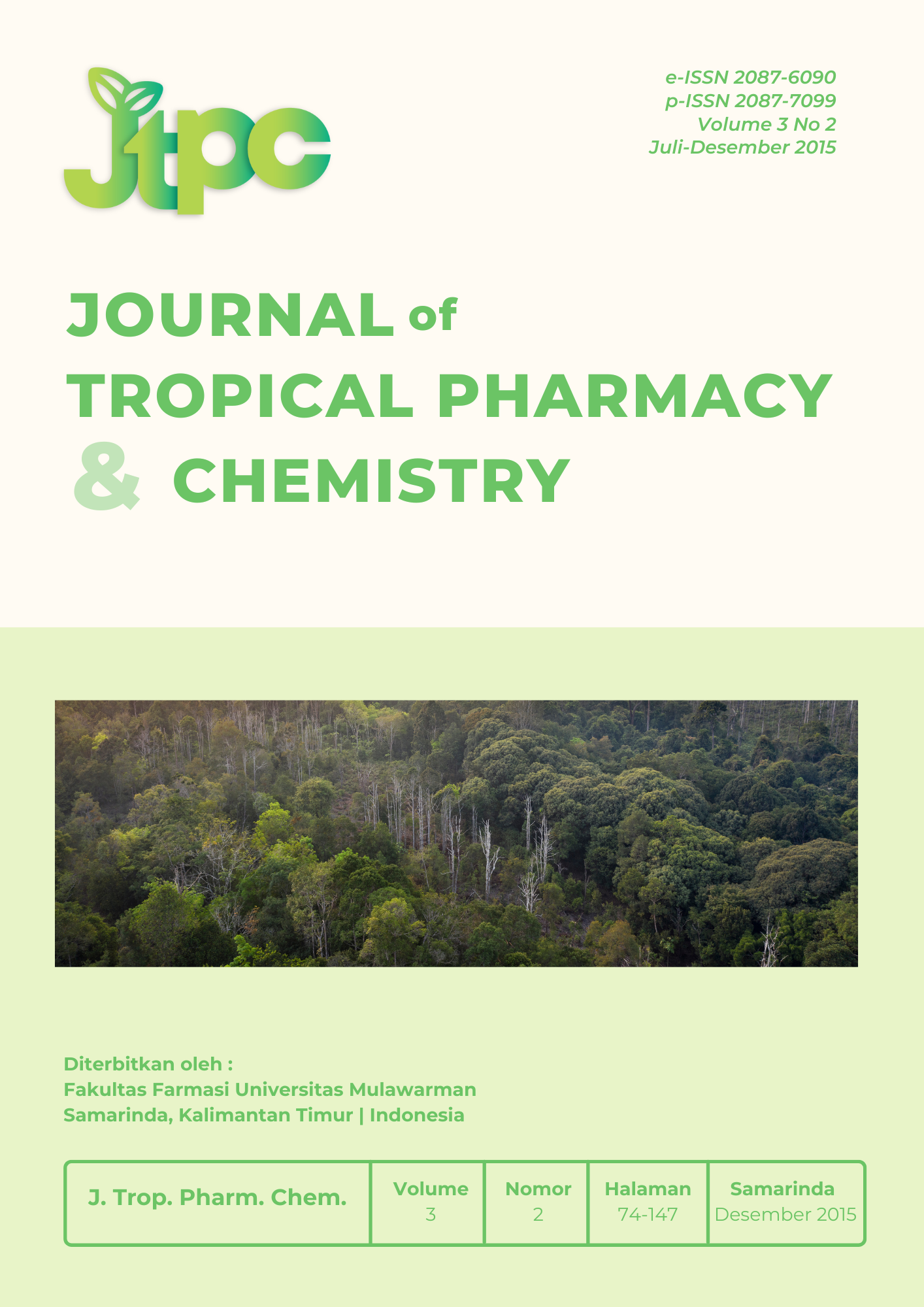Optimalisasi Ekstraksi dan Uji Metabolit Sekunder Tumbuhan Libo (Ficus variegate Blume)
Keywords:
Optimization of extraction, Libo leaves (Ficus variegate Blume), Secondary MetaboliteAbstract
Libo leaves (Ficus variegate Blume) is never eaten by caterpillars. This is indicated that libo leaves has a good secondary metabolites. This research was conducted on optimization of extraction techniques and test of secondary metabolites of leaves Libo. The optimization was done by changing variables viz. method of extraction, variation of amount of solvent, and duration of extraction. The effectiveness of extraction was seen from % of yield. Method of extraction was using maceration and soxhlet. Methanol was used as solvent with various 1:10, 1: 20, and 1:30. Durations of extraction were 1, 2, 3, 4, and 5 days for maceration and 1, 2, 3, 4, and 5 cycles for soxhlet. The results show that the best method for extraction libo leaves was soxhlet with 34% of yield, solvent ratio 1:30, and 5 cycle of duration of extraction. The secondary metabolites of libo leaves were phenols, flavonoids and alkaloids.
Downloads
References
1.Mandal.V, Yogesh M, Hemalatha.,2007.Microwave Assisted Extraction–An Innovative and PromisingExtraction Tool for Medicinal Plant Research. Pharmacognosy Rev1:7−18.
2.Harborne, J.B.,1996. Metode Fitokimia. Terjemahan: Padmawinata, K dan Soediro, I. Institut Teknologi Bandung:Bandung.
3.Heinrich,Michael.,et al.,2004. Fundamental of Pharmacognosy and Phytotherapi. Hungary: Elsevier
4.Farsnworth, N. R. 1966. Biological and Phytochemical Screening of Plant.
Journal of Pharmaceutical Sciences. 55: 59.
5.Jones, W.P., Kinghorn, A.D.,2006. Extraction of Plant Secondary Metabolites. In: Sharker, S.D. Latif Z., Gray A.L, eds. Natural Product Isolation. 2nd edition. Humana Press:New Jersey.
6.Depkes RI.,1995. Farmakope Indonesia. Departemen Kesehatan Republik Indonesia:Jakarta.
7.Sangi, M., Runtuwene, M.R.J., Simbala, H.E.I. and Makang, V.M.A. 2008. Analisis Fitokimia Tumbuhan Obat di Kabupaten Minahasa Utara. Chemistry Progress. 1:47-53




